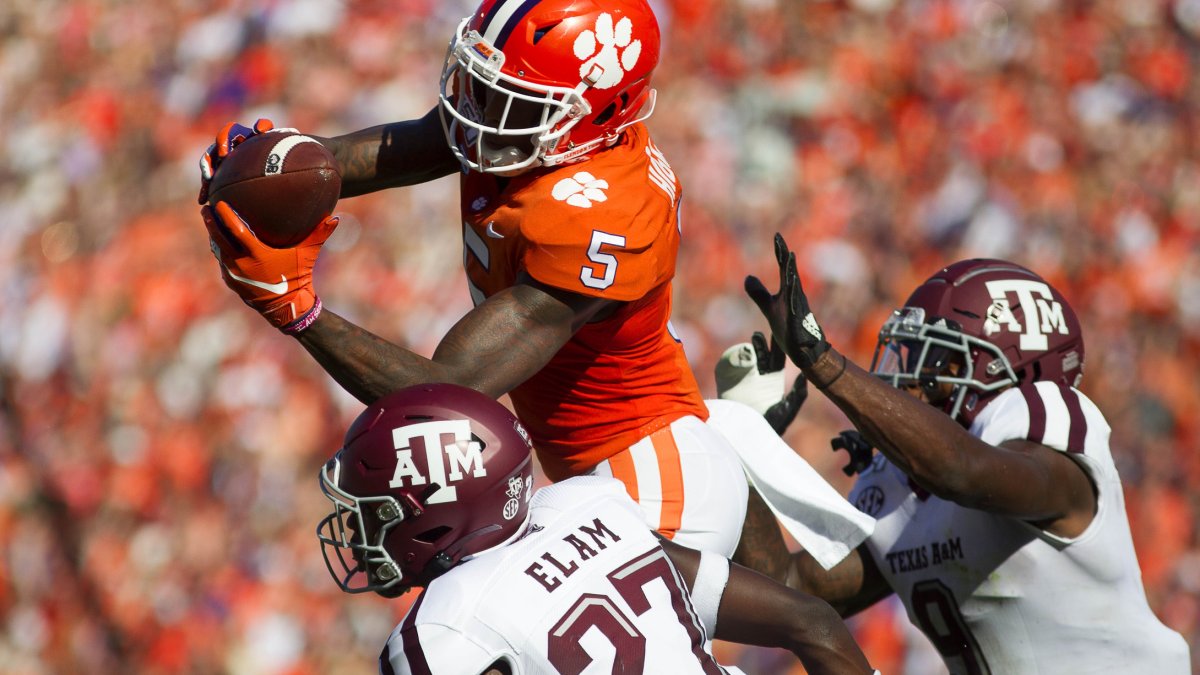Comparing current prospects to those of years past is standard procedure in draft evaluation, though most comparisons are built on the memory recall and subjective opinion of the particular evaluator. In this article, we’ll compare the celebrated 2020 wide receiver class to prior years and pick out the most similar comps for top prospects by a clearly delineated and quantifiable method.
PFF data scientist Eric Eager has done tremendous work building college-to-pro projections, which are built off of the robust college data we’ve collected since 2016 and have been applied to exercises like building an “Analytics” mock. In this analysis, I’m going to use traditional stats in order to go back further and join the college players to the pro data we have from 2006 on, including our proprietary wins above replacement (WAR) metric for quantifying player value.
[Editor’s note: Check out PFF’s 2020 Mock Draft Hub, NFL Draft Big Board and NFL Mock Draft Simulator. PFF Elite subscribers can also download the 1,250-page 2020 NFL Draft Guide.]
Below, I’ll walk through the top 11 2020 wide receiver prospects according to draft expectation as calculated by mock draft database GrindingTheMocks. I’ll then use those top comps for each prospect to form range-of-outcome projections for WAR.
Methodology
The comps below were derived from a two-step process. First, I used player age (as of Sept. 1, 2020) and draft position as filters, then used the rest of the matching features in principle component analysis (PCA). I found the closest statistically comparable players by euclidean distance between the players' principle components, and then gave each a “Similarity” score based on percentile of distance.
The filters for age and draft position are plus/minus one year and one round, respectively. The metrics for PCA are: weight, 40-yard dash, rushing attempts per game, max yards per reception season, career market share of team receiving yards, career market share of team touchdown and yards per route run.
For missing Combine 40-yard dash times, I filled the values with Pro Day times plus a 0.1 second penalty, or estimated using weight and other measurables. For years with route-run data (prior to 2016), I used yards per team attempt, with attempts adjusted down under the assumption receivers don’t run 100% of routes.
I’m showing the top five comps for each prospect in the table, but I expand the list to 15 for the process of projecting WAR over the first four seasons. The plots below with the ceiling, mean and floor WAR outcomes are based on the set of 15 prospects.
JERRY JEUDY
Exclusive content for premium subscribers

WANT TO KEEP READING?
Dominate Fantasy Football & Betting with AI-Powered Data & Tools Trusted By All 32 Teams
Already have a subscription? Log in



 © 2025 PFF - all rights reserved.
© 2025 PFF - all rights reserved.